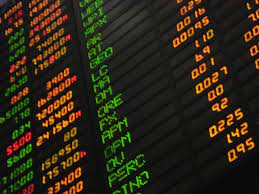Trading mechanisms and order types are essential components of market structure and operations in banks and financial markets. They govern how trades are executed and the instructions given by market participants. Here’s an overview of trading mechanisms and order types:
Trading Mechanisms:
- Continuous Trading: Continuous trading is the most common trading mechanism in financial markets. In this mechanism, trading occurs continuously throughout the trading session. Participants can submit orders at any time, and trades are executed as soon as there is a matching counterparty at the specified price.
- Auction Trading: Auction trading involves the periodic gathering of buy and sell orders to determine a single clearing price at which all matched trades are executed. Auctions can occur at the market open, market close, or at specific intervals during the trading day. Auctions allow for price discovery and can be particularly useful when market participants require a single reference price.
- Block Trading: Block trading refers to the execution of large-sized trades that are outside the scope of regular market orders. These trades involve a significant number of shares or a high value of a particular security. Block trades are often negotiated and executed off-exchange or through special facilities to minimize market impact.
- Dark Pools: Dark pools are alternative trading venues that allow participants to trade large blocks of securities anonymously. They are designed to minimize market impact and maintain confidentiality. Dark pools do not display order book information publicly, providing participants with a level of privacy for their trades.
Order Types:
- Market Order: A market order is an instruction to buy or sell a security immediately at the best available market price. Market orders prioritize execution speed over price certainty. The order is executed at the prevailing market price, which means that the actual execution price may differ from the displayed price at the time of order placement.
- Limit Order: A limit order is an instruction to buy or sell a security at a specific price or better. A buy limit order is executed at the specified limit price or lower, while a sell limit order is executed at the limit price or higher. Limit orders provide price certainty but do not guarantee immediate execution.
- Stop Order: A stop order, also known as a stop-loss order or stop-limit order, is triggered when the market price of a security reaches a specified stop price. A buy stop order is triggered when the market price rises to or above the stop price, while a sell stop order is triggered when the market price falls to or below the stop price. Once triggered, the order becomes a market order or a limit order, depending on the specific instructions.
- Stop-Limit Order: A stop-limit order combines elements of a stop order and a limit order. When the market price reaches the specified stop price, the order is triggered and becomes a limit order at a designated limit price. The order is executed at the limit price or better, subject to market liquidity and price movements.
- Iceberg Order: An iceberg order is a large order that is displayed as a smaller order size to the market. The visible portion of the order is displayed in the order book, while the undisclosed portion remains hidden. As the visible portion is executed, more of the hidden quantity is automatically revealed until the entire order is filled.
- Fill-or-Kill Order: A fill-or-kill (FOK) order is an order that must be executed immediately and in its entirety, or it is canceled (“killed”). FOK orders do not allow for partial fills. If the entire order cannot be filled immediately, the order is canceled, and no trades are executed.
- All-or-None Order: An all-or-none (AON) order is an order that must be executed in its entirety or not at all. Unlike FOK orders, AON orders can be executed partially if the entire order cannot be filled immediately. Any unfilled portion of the order remains active until it can be executed in its entirety.
These are some of the common trading mechanisms and order types used in banks and financial markets. Market participants choose the most appropriate trading mechanism and order type based on their trading objectives, risk tolerance, and desired execution strategy. It’s important for participants to understand the characteristics and implications of each order type to effectively navigate the markets.
SHARE
